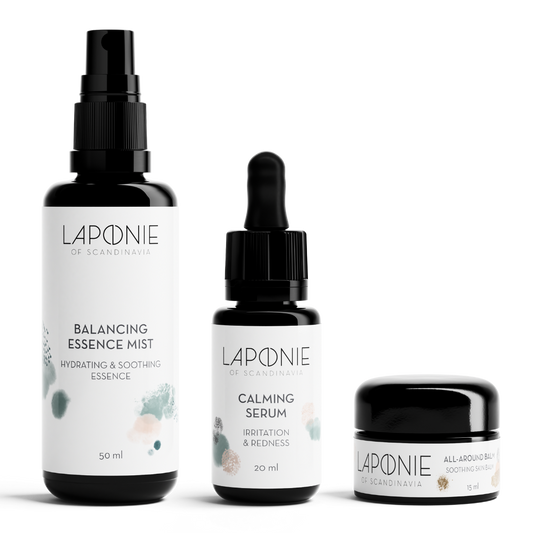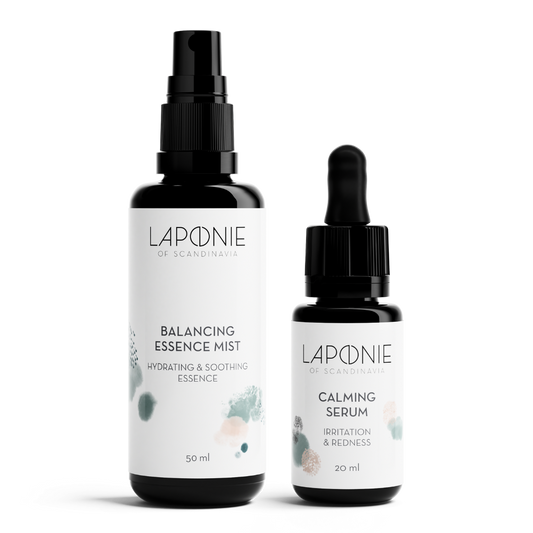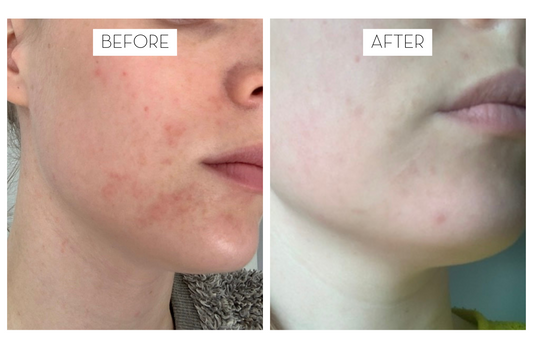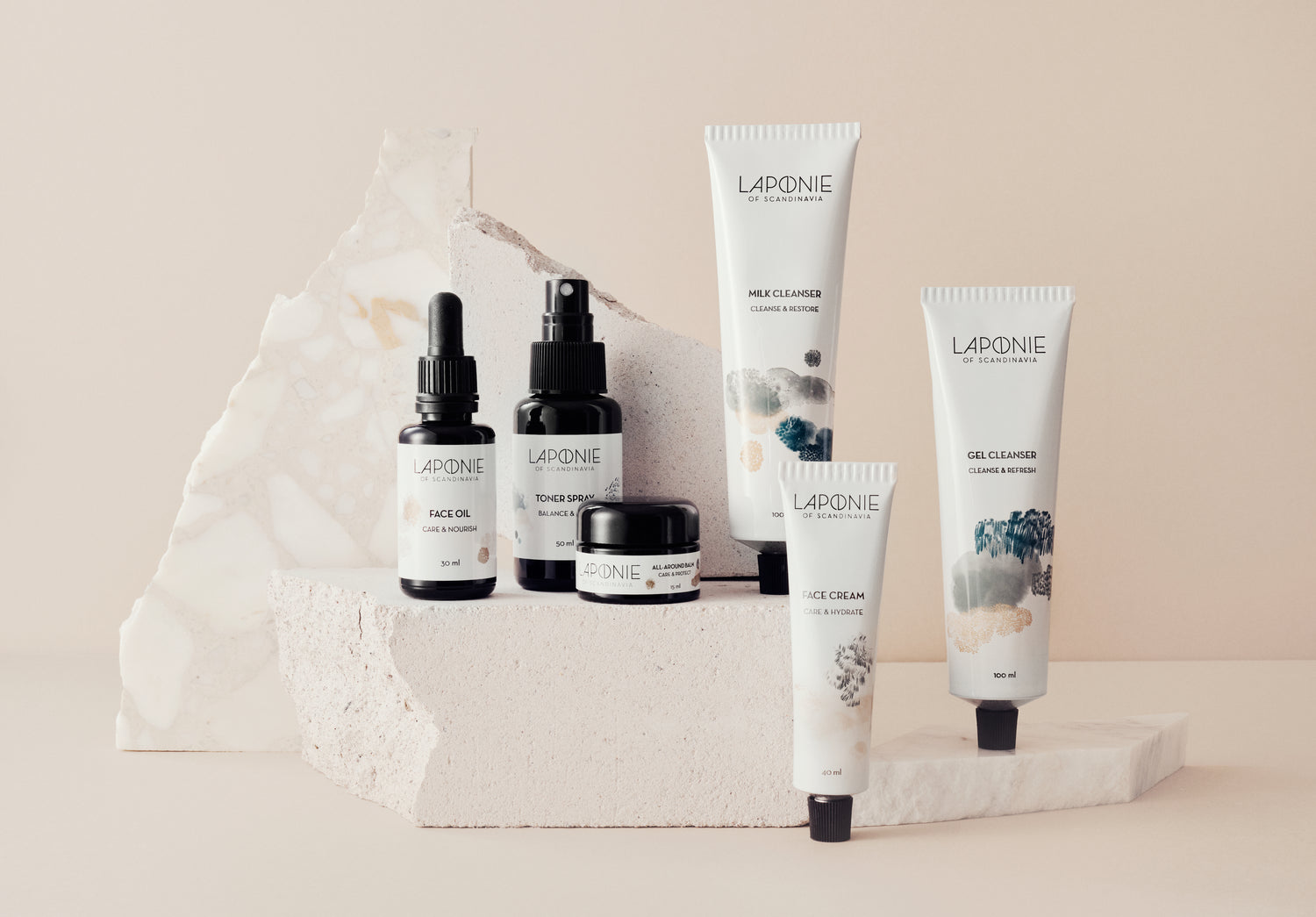What happens in your skin when it’s exposed to sunlight?
There are two types of UV light: ultraviolet A (UVA) and ultraviolet B (UVB). UVA impacts skin aging, while UVB causes sunburn. When exposed to sunlight melanin is produced by the melanocytes to protect the skin, causing skin to darken. When this happens, you get a tan.
Melanin is one of the fundamental defence mechanisms of our body; it’s there for reason. It protects skin from UV radiation, and is therefore crucial for our existence. Melanin also produces vitamin D, which is important for calcium absorption and healthy bones. People with light skin have less melanin, and therefore burn more easily.
How does the sun affect our skin?
Unfortunately, there is no such thing as a safe tan. UV radiation always causes an inflammatory reaction – a sunburn. Whether UV light burns or tans you it always damages skin cells in ways that accelerate skin-ageing by damaging collagen fibres and destroying vitamin A. Exposure to the sun also increases the risks of developing skin cancer.
From an aesthetic point of view sun damage such as hyperpigmentation, sun keratosis, dry skin, and fine lines and wrinkles are the most common results of exposing skin to UV light. Most affected areas are the forehead, décolletage and hands. There are however some skin conditions, such as psoriasis, that benefit from controlled and short-term exposure to sunlight, but here it’s paramount to consult your dermatologist.
How do you best protect your skin when outside?
Avoid direct sunlight and stay in the shade as much as possible. Wear sunscreen and remember to apply and reapply liberally! Wear clothing and a hat to protect your skin from direct UV rays. This is especially important for infants and small children. Wear sunglasses. Keep in mind that some medications and topical skincare products can make your skin more sensitive to the sun - consult your skintherapist or dermatologist about possible sensitisation and about treatments that are suitable for skin which is exposed to sunlight.
What types of sunscreen are there?
There are two types of sunscreen filters: organic (commonly referred to as chemical) and inorganic (commonly referred to as physical) filters. A common misconception is that chemical filters absorb and release UV rays while physical filters deflect and block UV rays. In fact, both types of filters work in a similar manner, as expertly explained by Labmuffin: both mostly absorb harmful UV rays and convert them into harmless heat energy, which is then released from the skin. Physical sunscreens (zinc oxide and titanium dioxide) reflect about 5 % of the UV rays but it’s not a substantial amount to make much of a difference when compared to chemical sunscreens (e.g., oxybenzone, avobenzone, octinoxate, bemotrizinol, bisocotrizole, tris-biphenyl triazine and octyl methyxocinnamate). Both types of filters are safe for skin when applied correctly. The recommendation is to use a minimum SPF of 30.
What about “natural” sunscreen then? Well, to put it simply, there is no such thing, unless staying inside on a sunny day can be called natural. The claim that e.g., raspberry oil, coconut oil or any oil for that matter, can provide sufficient sunscreen is utterly false, as noted by e.g. the Mayo Clinic.
Is sunscreen safe?
There’s a lot of discussion about the risks of using sunscreen. It’s good to remember no sunscreen is perfect and even if there was one, the chances of it being applied consistently and correctly are low; correct application is key for any sunscreen to work. It’s recommended that especially when out in the sun SPF products should be re-applied every two hours to maintain protection. Furthermore, research indicates that one additional reason people do burn while using sunscreen is much too long sun exposure. Sunscreens are not capable of protecting skin for hours and hours. When reducing sun exposure is not an option for you, the best way of finding out which kind of protection is the best for your skin and your needs is simply trying out different options and checking for any reactions.
At present there is not enough research data to provide a definitive answer to whether it is safer to use physical sun filters compared to chemical ones or vice versa. There is controversy though surrounding nano-sized physical filters; nano-particle physical filters improve the feel of physical sunscreens and are more translucent, but research has shown that they might be hazardous to humans if inhaled. Nano titanium dioxide is currently being studied as a possible lung carcinogen.
What sunscreen is best for sensitive, reactive and problem skin?
For very sensitive and reactive skin, physical filters tend to be tolerated better than chemical ones. This is however dependant on the formulation and especially the newer chemical filters in many European sunscreens are generally tolerated very well. Both types of sunscreens provide immediate protection upon application. You may have heard that chemical sunscreens need to be applied 15-30 minutes before sun exposure for the filters to activate. This is not true. Both types of sunscreens should be given some time to form an even layer on the skin before exposure to direct sunlight, but both types protect immediately and neither needs time to ”activate”.
If your skin is extremely reactive and clogs easily, you may want to try a powder-form SPF. If you do, keep in mind that mineral makeup does not provide enough coverage; rather go for a product which has been formulated specifically for sun protection, and with a minimum SPF of 30. If you opt for liquid sunscreen, try to choose a product without alcohol and fragrance.
Always remember to clean your face properly after using sunscreen, as sunscreen products, be they physical or chemical, can clog pores and cause impurities.
What about the coral reefs then?
From an environmental point of view, sunscreens are a hot topic. In recent years there has been heavy debate and high public interest surrounding the question on whether chemical sunscreen harms coral reefs. As of right now, there’s no clear scientific evidence that chemical sunscreens have any meaningful adverse effects on coral. The few studies that have led to the precautionary ban of oxybenzone and octinoxate (chemical sunscreen filters) in some US states were misinterpreted and conducted with concentrations far exceeding the naturally occurring conditions. There are gaps still in science, but to date there is no major evidence that chemical (or physical) sunscreens are the culprit in the degradation of coral reefs. The biggest reasons for coral bleaching are climate change, diseases and poor wastewater systems, not sunscreen. Again, Labmuffin has an excellent post on the subject.
If you do burn, what is the best way to treat skin?
Recognise the symptoms:
- redness
- skin feels warm or hot
- pain or itching
- swelling
- blisters
- headache, fever and fatigue if severe sunburn
Take frequent cool showers or baths or apply a cool cloth to the affected area. Keep the area dry and if flaking occurs apply a moisturising and soothing product. For some, natural yoghurt works well. You may take some ibuprofen to reduce swelling, redness and pain. Remember to drink plenty of water, as a sunburn draws fluid to the skin’s surface and away from the rest of the body. If physical symptoms are severe and persist, see a doctor. If your skin blisters, allow the blisters to heal, and do not pop them. Be extra careful to protect sunburned skin as it heals; use protective clothing and stay out of the sun.





